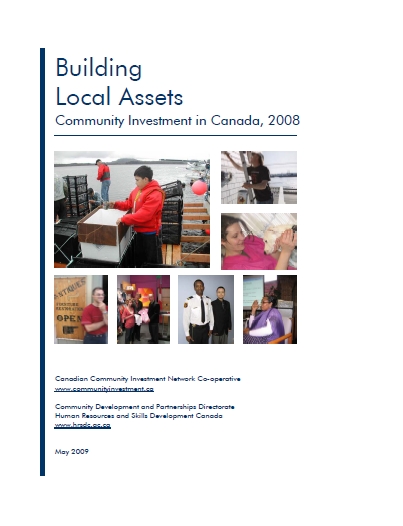In Canada, community investment is a relatively young financial sector with an evolving definition. At its simplest, community investment is financing that targets underserved communities to develop opportunities for income generation, housing and community renewal. These communities have development needs that are not being met fully by the mainstream financial sector. This financing can be in the form of debt, loan guarantees and equity.
Using this broad definition, in 2008 there was a minimum1 of $1.4 billion devoted to community investment in Canada. This represents money that is invested and receivable. This number was derived by a survey conducted by the Canadian Community Investment Network Co-operative (CCINC) in the fall of 2008 and winter of 2009. Eight networks provided aggregate data representing over four hundred separate organizations, while another forty three organizations answered the survey directly.
Quick Facts:
- 487 organizations reported having an aggregate of $1.4 billion
- Managed assets varies greatly by organization – from $7,000 to $280 million
- Organizations that reported in 2006 and 2008 have increased their assets by 11%
- Most community investment is debt – over $1.35 billion
- Nova Scotia has bucked the trend raising $30 million in equity with tax incentives
- Federally capitalized development corporations represent 66% of the sector
- Most organizations are placing a large percentage of their capital; over 60%
- A conservative demand for capital required in the next 2 years is $750 million
This scan shows that the community investment sector has continued to grow since 2006. With better research and development, greater collaboration and a forward looking community investment framework, this sector can provide answers for building and retaining local assets in Canadian communities.
Community investment focuses on unmet financing needs and is highly transparent with the majority of capital recruitment and financing deals overseen by community based boards. It is capital held locally, managed by people accountable to its placement. It is based on long term investment, and blended returns. It is not based on purely the profit motive. Given the current financial crisis, community based investment and building locally controlled capital is possibly one of the wisest investment decisions governments and private investors can make.
Download the PDF
Contents
Executive Summary
Introduction
Community investment defined
Background
Partners
Objectives
Methodology
Limitations
Profile
Types of community investment organizations
Community investment deals
Assets
Estimated total assets
Perceived or real growth
Getting their capital to work
Product mix
The Future
Future opportunities for financing
Putting a monetary value on opportunity
Barriers to growth
Implications for future research and development
End note
References
Appendix A – Survey
Appendix B – Survey Respondents





